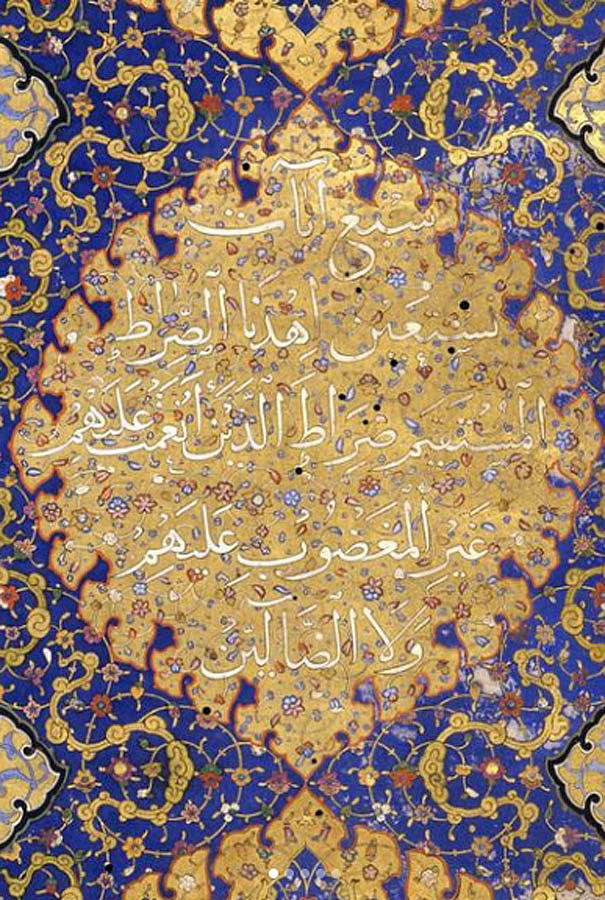
A Magnificently Illuminated Manuscript from the Libraries of the Khan Of Bukhara and the Mughal Emperor Shah Jahan; manuscript comprising the first half of the Qur’an, Central Asia, probably Bokhara, c. 1600-1625 A.D.
Acquired by the Detroit Institute of Art in 2007, this exquisitely-illuminated manuscript contains a library note, copied in the hand of Shah Jahan, in Persian nastal’iq in black ink reading that this Qur'an was removed from the library of Nadir Muhammad Khan of Bokhara after the battle of Balkh in 1646 A.D. and subsequently in the imperial library of emperor Shah Jahan.
Shah Jahan, the fifth Mughal emperor (r. 1627-58), was a keen bibliophile and continued the traditions of his predecessors by patronizing the artists of his court atelier and adding to the imperial collections. Although often better known for his patronage of architects and his personal love of precious stones, the production of the Padshahnama manuscript, the chronicle of his reign now in the Royal Library, Windsor, is alone testament to his connoisseurship.
Nadhr Muhammad Khan came to power in 1641 and under his leadership Bukhara flourished and his court was filled with the learned and the pious. He displayed immense wealth and it is reputed that he required a thousand camels to move into Bukhara. His reign was to be short-lived as he was forced to flee from Bukhara to Balkh when his son, Abdul-Aziz rebelled against his father in 1645 A.D. He asked for help from the Mughal emperor Shah Jahan and as a result Balkh fell to the Mughals on 17th July 1646. The Mughal occupation was not a success and they were forced to hand back Balkh to Nadr Mohammad Khan on 13th October 1647. However, he never regained the authority he had had before and he abdicated after he had dominated the political life of Balkh for almost half a century. He died on his way to Mecca.
